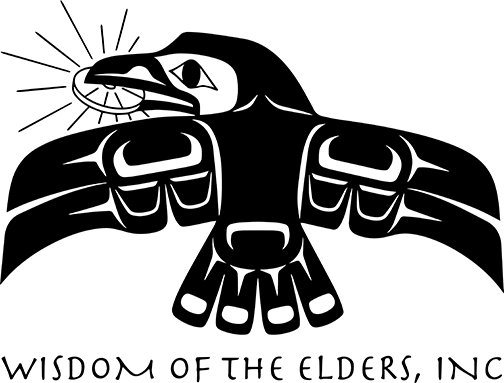The Lakota – Teton Sioux
with Arlie Neskahi
From the journal of William Clark::
William Clark, Sept 26th, 1804. I was met by about ten well-dressed men who took me up in a robe highly decorated and set me down by the side of their chief. … A place of 6 feet diameter was clear and the pipe of peace raised on forked sticks, under which there was swans down scattered. In the center about 400 pounds of excellent buffalo beef as a present to us.
Arlie Neskahi:
Welcome to Wisdom of the Elders. I’m Arlie Neskahi.
It was a fair evening on the bad river. Black Buffalo’s camp was bustling. Elders and war leaders gathered in the council tipi to discuss the next day’s affairs. Earlier, some of them had smoked with a St. Louis man named Meriwether Lewis, and had agreed to meet with his party the next morning. They talked about the size of his company, the number of guns, the quality and quantity of the goods stacked in his boats.
Black Buffalo was from a band of Teton Sioux known as the Lower Brule’. Semi-nomadic buffalo hunters, they were camped near what is today the city of Pierre, South Dakota. Black Buffalo and his council talked about how these people from St. Louis were disrupting the delicate balance of power between the Teton and neighboring tribes.
Every year, the Sioux traveled east to the great Dakota rendezvous on the James River to trade their products for British manufactured goods — guns, knives, tin pots and needles. These goods were the used to purchase corn and other foods from the village tribes up the Missouri. If Lewis and his company were allowed to pass and to establish trade upriver, the Teton would lose a vital market. It > was decided they would try to stop the voyagers, or charge a handsome tariff.
Historian James Ronda:
James Ronda:
Lewis and Clark think they can easily rearrange not just trade, but politics. And that those relationships are somehow plastic, or like clay, that you can mold and shape them to your own desires. What they don’t understand is that native people have made a substantial investment, in those trading relationships. And to alter them is to ask folks to rearrange their lives, to rearrange where they might get guns and ammunition, where they might get steel needles and iron pots. … and that’s asking a great deal.
Neskahi:
The next morning, black buffalo and the other leaders witnessed Lewis and Clark’s display of military might and diplomacy. But the Indians were disappointed in the gifts they were offered. Trinkets and > flags were meaningless symbols of a distant people. They demanded a more substantial tribute.
The talks might have gone better. Communication was difficult for the lack of a good translator. The day ended with Clark drawing his sword and retreating to his pirogue. The next days were equally as tense, except for the times when differences were set aside and the men of the corps were treated to spectacular displays of Sioux culture.
Music:
William Horncloud
Sioux National Anthem and Victory Song
Traditional Lakota Songs
Canyon Records
Ladonna Brave Bull Allard is tribal historian for the standing Rock Sioux tribe, Fort Yates, North Dakota.
Ladonna Brave Bull Allard:
We were fierce people. We ruled the plains at that time. There’ve always been leaders like us. People came to us for negotiation. They came to us to trade songs. They came to us because we traveled all over and we knew all the other tribes. And you came to us to make treaties. You came to us to make wars. The Lakota men were known for their bravery.
Neskahi:
I’m Arlie Nesakhi, and this is Wisdom of the Elders.


